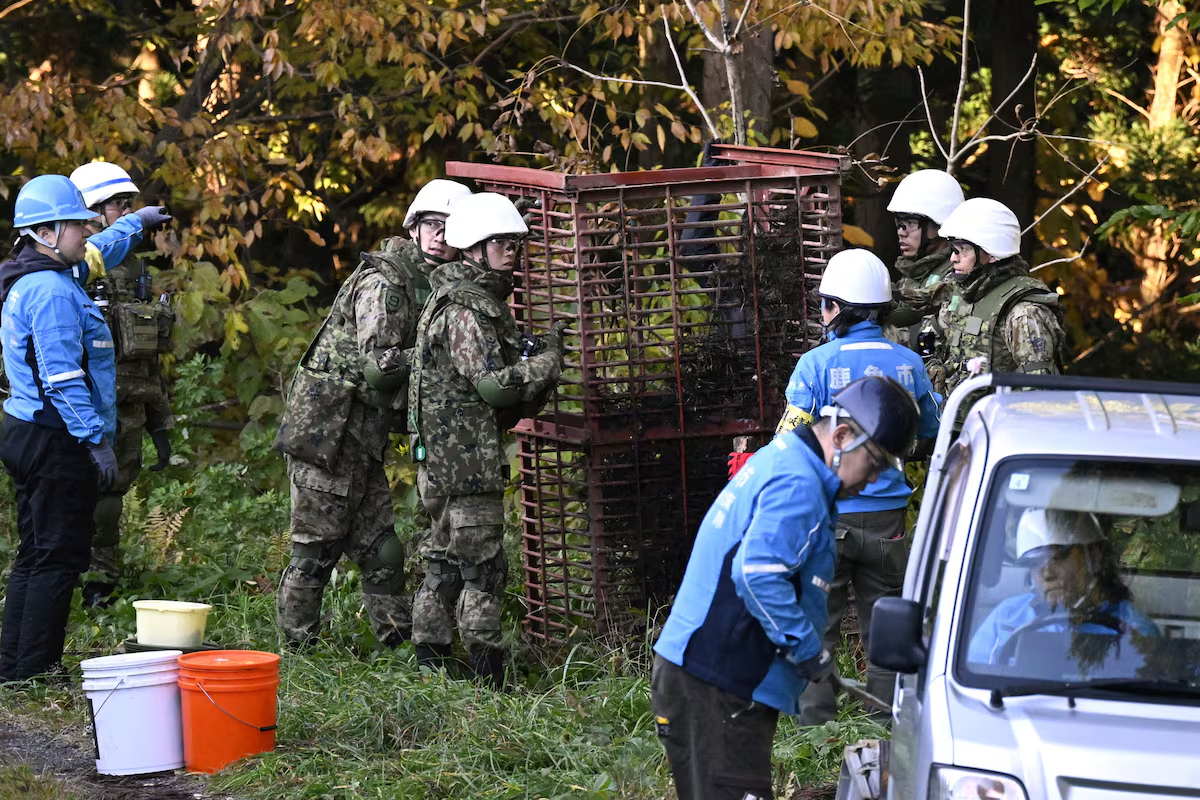
Last Sunday, Kiyo Goto, a 79-year-old woman from Akita Prefecture in northern Japan, called her family to tell them she was going on a trip to the mountains. I was going to pick mushrooms. She was found dead in a wooded mountain area early Monday morning. The severity of her facial injuries suggests she was attacked by a bear, according to local media, adding another victim to a wave of events that has the country in suspense.
Since April, 13 people have died in Japan after being attacked by bears, according to Japan’s Ministry of the Environment. The figure beats previous records. In Akita Prefecture alone, with a population of around 900,000, attacks against 60 people were reported, including four deaths. More than 20,000 bear sightings were recorded between April (when the fiscal year used by Japan for counting begins) and September, about 7,000 more than those observed in the same period the previous year.
Given the situation, the government has decided to take strong measures. On Wednesday, Tokyo approved the deployment of the Ground Self-Defense Force (the country’s army) to assist in bear culling operations, according to Japan’s Kyodo news agency. The tasks, for the moment, are logistical support. The military will help set up and transport the traps, although they will not shoot the animals or carry firearms.
“We understand that damage caused by bears in Akita Prefecture is a serious problem. We will continue our activities as needed to be as helpful as possible,” Yasunori Matsunaga, commander of the 9th Ground Self-Defense Forces Division, said Wednesday during the signing of the agreement with the municipal government.
About 15 soldiers began working in the area on Wednesday. The personnel are equipped with bulletproof vests, rifle-shaped poles about 165 centimeters long, protective shields and bear repellent spray, and will be responsible for transporting hunters, helping dig pits to bury bear carcasses and collecting information via drones.
The operations began in the town of Kazuno, where residents have been warned for weeks to avoid the surrounding forests, stay home at night and carry bells to scare away bears that may wander near homes in search of food, according to Reuters. Subsequently the intervention will be extended to other municipalities that request assistance.
Akita Governor Kenta Suzuki called for support from the Self-Defense Forces in late October, arguing that the crisis was worsening and beginning to spiral out of control. The situation is “extremely serious,” he posted on social networks on October 26.
Meanwhile, the National Police Agency is considering allowing its officers to shoot bears with rifles, while the Ministry of the Interior and Communications plans to help municipalities find qualified personnel for hunting.
The habitats of black and brown bears, the two species found in Japan, have expanded in recent years. The Ministry of the Environment estimated in late 2024 that the number of brown bears in Hokkaido, the northern island, has more than doubled since the 1990s to about 11,700 individuals. There are no official estimates of black bears, which mostly live on the main island of Honshu, although a 2023 analysis cited by the local press speaks of 44,000 specimens, three times more than in 2012.
Attacks usually peak in October and November, when they feed intensively before hibernation. With the animals filling headlines every day, the media and authorities have stepped up advice to avoid a fatal encounter. They ask for caution when entering the mountains, they recommend wearing a helmet and also carrying a bear bell, a radio and repellent spray.
In the event of an encounter, a group of researchers from the graduate school of the University of Akita say that attacked people tend to avoid more serious injuries by lying face down and covering their heads and necks. Their study is based on a survey of 70 people injured in bear attacks in the prefecture during the 2023 fiscal year, when six deaths were recorded nationwide, the second-highest number on record. Because bears typically stand up when threatening or attacking, victims’ faces and heads are often the target of their lunges and claws. It is therefore advisable to lie down on the ground and protect yourself with your hands and arms. The 70 injured people studied had an average age of 70 years.
Social alarm grew to such an extent that, at the end of October, the producers of the film “Higuma!” (The Brown Bear!) has decided to postpone its premiere, scheduled for November, to January. The film, shot in a comedic tone, however contains disturbing sequences in which one of these animals bites off a person’s arm, the newspaper reported. The Asahi Shimbun.
These scenes, however, are real. Tuesday 7 October, evening. A bear enters a supermarket in Numata, a town in Gunma prefecture, in the east of the country, and attacks two customers, causing them minor injuries. Security camera images show what appears to be a 1.4 meter long adult specimen, according to local police. “It seemed to me that the bear was confused. It stayed in the store for 10 to 15 minutes. It didn’t seem like it was looking for food,” says the manager, who was also attacked.
Wednesday 22 October, 7.30am. An eighty-year-old couple is attacked and seriously injured by a bear in front of their home in Aizuwakamatsu, Fukushima Prefecture. The event takes place while the woman is taking out the garbage. Suffers facial injuries; The husband is injured in the neck when he goes out to see what is happening after hearing her scream “Bear!”, according to police. The animal was about a meter long and ran in the nearby forest.
Sunday morning, October 5th. A Spanish tourist is slightly injured by a bear’s paw while taking photographs near a bus stop in Shirakawa-go, a UNESCO World Heritage Site in Japan’s Gifu Prefecture.
According to a recent study by public broadcaster NHK in collaboration with Onishi Naoki, an expert at the Forestry and Forest Products Research Institute, around 70% of the attacks occurred in inhabited areas where people carry out their daily activities.
Experts cited by Kyodo say the phenomenon is linked to the decline of rural communities and the abandonment of agricultural land, which has eliminated buffer zones that previously separated settlements from wilderness. They go in search of something to eat crossing uncultivated fields and uninhabited areas which remain silent and dark at night.
“Bears are getting closer and closer to humans, to our residential areas,” Ryoji Suzuki, 76, president of a hunting association based in Otsuki, Yamanashi Prefecture, near Tokyo, told Kyodo.
The problem is also linked to aging which empties cities. Akita prefecture, where the army is deployed, has the lowest birth rate in the country. More than a third of its residents are over 65. Climate change, which affects food availability for bears, is also thought to have an impact.
Furthermore, as plantigrade habitat grows, the number of hunters decreases. Firearms hunting licenses are at their lowest: in 1976 around 500,000 were issued, but since 2012 they have fallen below 100,000. The Government has also adopted measures in this field. In September it allowed municipalities to authorize hunters to kill bears in populated areas. Previously, police permission was required.
The rules have generated controversy. There is concern for the safety of citizens, for attracting inexperienced hunters, for possible stray bullets. And not everyone is clear that killing bears is the long-term solution.
“It is not enough to focus solely on eliminating the hazard at the site as an interim measure,” said Shinsuke Koike, of the Tokyo University of Agriculture and Technology, quoted by Kyodo. “There is always a factor that caused the appearance of bears in urban areas, and we must learn from previous cases, otherwise they will continue to appear,” said the director of the Japan Bear Network, a non-governmental organization that promotes coexistence with bears.





